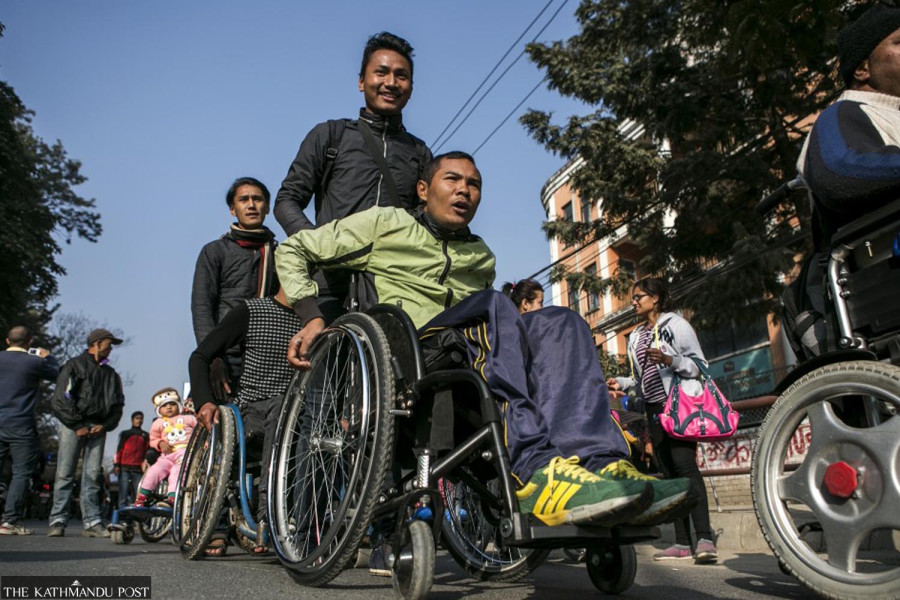National
Accidents, insurgency blamed for rise in disabled population
Activists say disabled numbers could be more than reported.
Prithvi Man Shrestha
Nepal has been seeing a sharp rise in the number of people with disabilities in the last two decades forcing the government to spend more on social security for such people.
According to the Population Census 2021 released last Friday, the number of disabled people increased to 647,744 in 2021 from 513,321 in census 2011.
The disabled population in Nepal, according to the 2021 census, accounts for 2.2 percent of the national population, a rise from 1.94 percent in 2011. As per the 2001 census, only 0.46 percent of people in Nepal were disabled.
“Increasing cases of road accidents and the decade-long Maoist insurgency are responsible for the rise in the number of disabled people,” said Hemraj Regmi, deputy chief statistician, at the National Statistics Office, which released the final report of the census last week.
The share of the population aged 60 years or above stood at 10.21 percent, a rise from 8.13 percent in 2011, according to the new census report.
Problems like poor vision and hearing loss appear as one grows older. “Growing ageing population contributed to the rise in the number of disabled people with such problems,” said Regmi.
According to the census, the share of disabled population with partially impaired vision stood at 17.1 percent, the second largest after the physical disability whose share is 37.1 percent.
Likewise, the share of blind population in 2021 is 22.5 percent, up from 18.46 percent in 2011.
Likewise, the share of disabled population with hearing problems stood at eight percent in 2021.
If the number of deaf people is also included, the total share of the population with hearing impairment stands at 15.9 percent, up from 15.45 percent in the 2011 census.
While the rise in the ageing population contributed to the rise in the number of disabled people, even the number of younger disabled people is also rising, according to Regmi.
“Rising cases of accidents, particularly road accidents and the Maoist insurgency also contributed to the rise in the number of young disabled people,” he said.
People who were disabled during the insurgency continue to carry the disabilities and they are continued to be counted as disabled in each census until they are alive.
As of mid-February of the current fiscal year 2022-23, a total of 137 people were seriously injured in road accidents while 4,600 sustained minor injuries, according to the traffic police office.
The rise in disabled population means that the state has to spend more on their social security. According to the Department of National ID and Civil Registration, 194,473 people who are fully disabled or heavily disabled are the beneficiary of the social security allowance as of mid-January this fiscal year.
Article 43 of the constitution has guaranteed the right to social security for the disabled people. The government had started providing social security allowance to disabled people since fiscal year 2008-09.
A fully disabled person receives Rs3,990 per month while heavily disabled receives Rs2,128 per month, according to the department.
The result of the census, however, has not pleased activists working in the field of disabled people.
Sugam Bhattarai, general secretary of the National Federation of Disabled Nepal, said that the census results have not reflected the true figure of disabled people. “It must be 10-15 percent of the population,” he said. “We suspect enumerators skipped asking questions about disabilities in many households.”
He said that the ‘misrepresentation’ of the figures on disabled population in the census could affect their political participation. “They also cannot get proper representation in government employment,” he added.




 19.12°C Kathmandu
19.12°C Kathmandu

%20(1).jpg&w=200&height=120)













